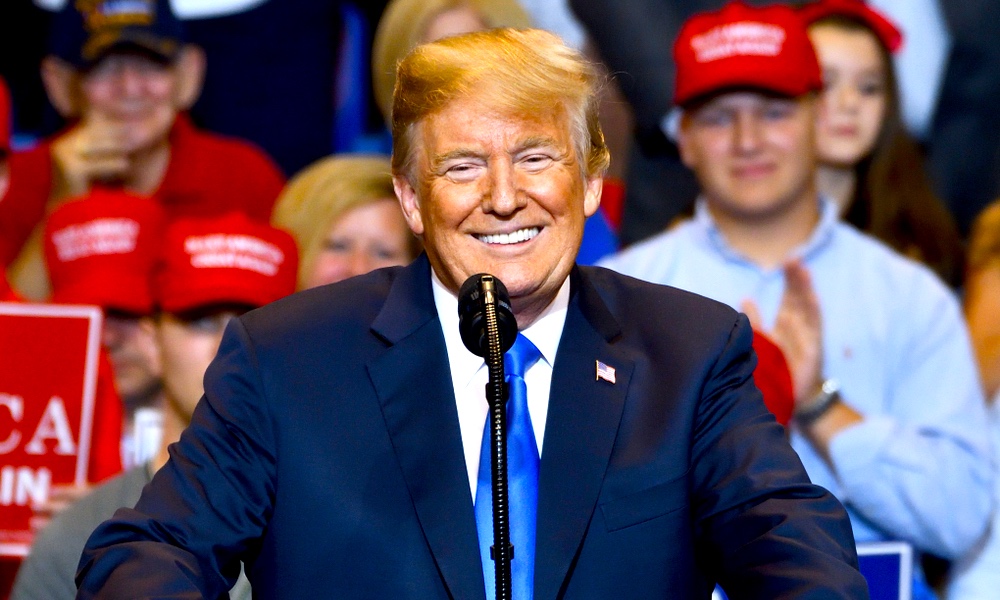President Trump and President Xi Jinping Pause Tech Trade War, Threat of Higher Cost iPhones Still Linger
 Credit: Evan El-Amin / Shutterstock
Credit: Evan El-Amin / Shutterstock
Toggle Dark Mode
While the ongoing trade wars between the U.S. and China have already garnered their fair share of economic and diplomatic repercussions, President Donald Trump, in an interview with The Wall Street Journal last week, suggested that additional tariffs on China imports — including Apple’s iPhone and Mac computers — could be imminent.
“Maybe. Maybe. Depends on what the rate is,” the President said of imposing tariffs on devices like iPhone, specifically, adding that “I mean, I can make it 10%, and people could stand that very easily.”
But while the President stood firmly by his intent to “move ahead” with imposing tariffs on an additional $200 billion of goods imported from China, it appears that a summit held over the weekend with his Chinese counterpart, President Xi Jinping, and officials from both administrations, was at least somewhat fruitful.
Negotiations
As CNBC reports, the planned bilateral trade talks between the two World powers resulted in them striking an agreement to pause their ongoing trade disputes, and specifically to hold off on imposing additional tariffs on each other’s goods until after January 1, 2019 (and for an additional 90-days thereafter) as talks continue between both countries.
“President Trump has agreed that on January 1, 2019, he will leave the tariffs on $200 billion worth of product at the 10 percent rate, and not raise it to 25 percent at this time,” reads an official statement from The White House obtained by CNBC.
“Both parties agree that they will endeavor to have this transaction completed within the next 90 days. If at the end of this period of time, the parties are unable to reach an agreement, the 10 percent tariffs will be raised to 25 percent,” the statement added, noting that American and Chinese officials will over the next 90-days “continue to negotiate lingering disagreements on technology transfer, intellectual property and agriculture.”
As part of the agreement, China made a number of additional concessions, including its pledge to purchase a yet-to-be-determined amount of agricultural, energy, industrial, and other products from the United States to help reduce the trade imbalance between our two countries.
Worth noting is that while the agreement is a promising first step towards restoring peace through negotiation, it doesn’t in any way, shape or form guarantee that iPhone tariffs are off the table, entirely.
It means that, for the next 90-days, the U.S. and China will continue trying to work things out; however, if they’re unable to reach a consensus on how to proceed, then we can almost certainly expect those additional tariffs to take effect next year.
In a research note penned to investors just days ahead of the U.S./China trade summit, Morgan Stanley analyst, Katy Huberty, pointed out that the Trump administration’s threat of additional China tariffs could ultimately raise the price of iPhones — with the latest iPhone XS family, for example, potentially costing between $60 and $160 more — should Apple decide to pass those additional costs onto its customers.
Move Manufacturing to the United States?
Unfortunately, according to Huberty and her colleagues, Apple has one of “the most significant exposures to Chinese exports to the U.S.” since the assembly of (most) Apple products takes place in China; and since China is “one of the only countries that can provide such a large and low-cost labor force with the expertise in manufacturing and tooling that is required” to produce an estimated 300 million iPhones per year.
She went on to note that Apple, in this sense, has little choice but to manufacture its iPhones in China, especially since moving operations to another country in the region “is largely inconceivable and would require heavy investment in robotics and automation.”
Likewise, moving all (or even just a fraction) of iPhone assembly to the U.S. (as Trump has verbally pushed for on multiple occasions) would be equally difficult — not only because the average U.S. factory worker earns about four times as much as their Chinese counterparts, but, according to Huberty’s estimates, the amount of sheer space and manpower that would be required to keep such a high-volume operation running smoothly would “exceed that of Cincinnati, St. Louis, and Pittsburgh combined.”
Ultimately, the analyst concluded that regardless of the outcome garnered between the U.S. and China during their bilateral trade talks, Apple will likely keep its China operations 100 percent intact — vis á vis, challenging any Trump tariff head-on — even though doing that would be considered “value destructive” for AAPL shareholders.
And that’s because, put bluntly, either Apple (or its customers) will ultimately have to stomach the additional taxes — either reducing profit margins on Apple’s end, or by passing the bill along to its customers, risking the possibility of blowback.
Breaking Down the Numbers
According to some estimates, an additional import tax on iPhones of between 10 and 25 percent could increase the overall cost of an iPhone XS by between $60 and $160, with similar increases expected for the iPhone XS Max and iPhone XR.
And according to others, if Apple decides to step up to the plate and absorb the additional costs — keeping its iPhone devices at (or very close to) their current price range, it’s likely that the company’s margin of profit would “contract significantly,” Huberty notes, resulting in an estimated reduction of between $1 and $2.50 per share to AAPL‘s earnings-per-share outlook for all of 2019.
Would you be willing to pay an additional $60-160 for your next iPhone? Let us know in the comments.






